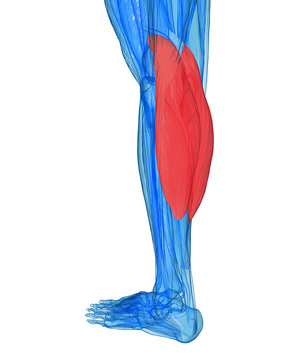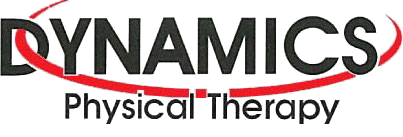Dynamics Physical Therapy February 2015 Newsletter
Understanding Calf Sprains
A calf strain is a painful injury that is the result of a pulled or torn calf muscle. The pain is usually felt in the back of the lower leg immediately after the injury has occurred and some people report hear a popping sound if the calf muscle actually fully tears. Individuals who engage in sports activities on a regular basis, such as tennis, squash, or running, commonly suffer from calf strains, but any type of activity that causes the calf muscle to contract too abruptly may cause this type of strain.
There are three grades of calf strains. Grade 1 refers to minor muscle damage that does not hinder most activity but would likely benefit from treatment. Grade 2 is characterized by moderate  muscle damage that decreases physical activity, and grade 3 refers to severe muscle damage (e.g., a serious tear) that causes severe pain, muscle weakness and spasms, and dramatically reduced activity. Individuals with a grade 3 calf strain may struggle to walk and bear weight on the injured leg. There are a number of ways to manage a calf strain once the injury grade has been determined.
muscle damage that decreases physical activity, and grade 3 refers to severe muscle damage (e.g., a serious tear) that causes severe pain, muscle weakness and spasms, and dramatically reduced activity. Individuals with a grade 3 calf strain may struggle to walk and bear weight on the injured leg. There are a number of ways to manage a calf strain once the injury grade has been determined.
Immediately after the strain has occurred, a technique known as RICE (rest, ice, compression, and elevation) should be initiated. Resting the muscle is an important treatment approach, especially for grade 1 strains. A cold compress also helps reduce any secondary tissue damage and internal bleeding that may have occurred. It is typically recommended that the RICE technique be frequently repeated for 24 to 72 hours following the strain*. Most active individuals ignore the pain that is caused by a minor calf strain and continue to engage in high-intensity activities (e.g., sports). This is not safe and can lead to a grade 2 or 3 calf strain. In general, vigorous activity should be avoided for 1-3 weeks for a grade 1 strain and up to 6 weeks for a grade 2 strain in order to promote the proper healing. A grade 3 calf strain may require surgery in order to repair the damaged muscle tissue, followed by Physical Therapy for anywhere from 3 to 6 months.
After completing the acute management stage above, your Physical Therapist will complete a biomechanical and postural scan to determine if there was a reason why the calf muscle got injured. Once in the sub-acute phase, gentle stretching is recommended. Physical Therapists also commonly perform soft-tissue techniques such as trigger point therapy, and acupuncture to facilitate healing [5]. As the range of motion in the lower leg begins to improve, a therapist can demonstrate how to progress from gentle stretching techniques to more dynamic training exercises including concentric and eccentric strengthening exercises, balance work, and proprioceptive training. These types of exercises help individuals regain their agility and strength.
If you are suffering from a calf strain and would like help managing your injury or preventing further muscle damage, our trained Physical Therapy professionals can show you stretching exercises and strengthening methods that have proven to be useful. Rehabilitation has been shown to speed recovery and help people quickly return to their normal routines [5].
Our Physical Therapists would be happy to assess your current or previous injury and create a program tailored specifically to your needs and goals. Call Dynamics Physical Therapy to make an appointment or to ask any questions you may have.
*Note: There is a new body of research emerging suggesting the use of ice in the acute phase is not helpful for healing, though it can reduce pain. As evidence collects and practice begins to change we will be sure to update our recommendations.
References
- Glazer JL, Hosey RG. Soft-tissue injuries of the lower extremity. Prim Care. Dec 2004;31(4):1005-24.
- Mueller-Wohlfahrt H, et al. Terminology and classification of muscle injuries in sport: The Munich consensus statement. Br J Sports Med. 2013;47:342–350.
- Saxena A, St Louis M, Fournier M. Vibration and pressure wave therapy for calf strains: a proposed treatment. Muscles Ligaments Tendons J. 2013; 3(2):60-2.
- Nsitem V. Diagnosis and rehabilitation of gastrocnemius muscle tear: a case report. J Can Chiropr Assoc. 2013 Dec;57(4):327-33.
- Dixon J. Gastrocnemius vs. soleus strain: how to differentiate and deal with calf muscle injuries. Curr Rev Musculoskelet Med. 2009;2:74–77.


